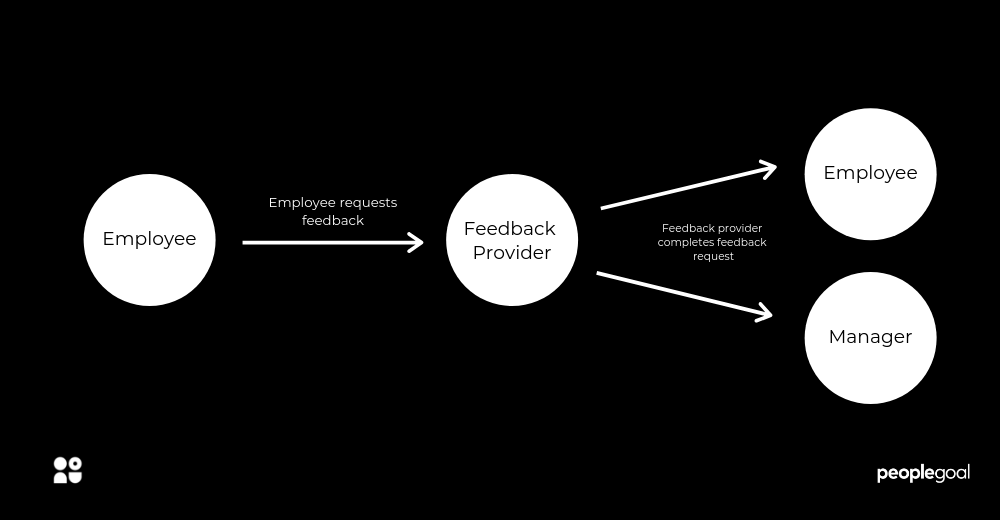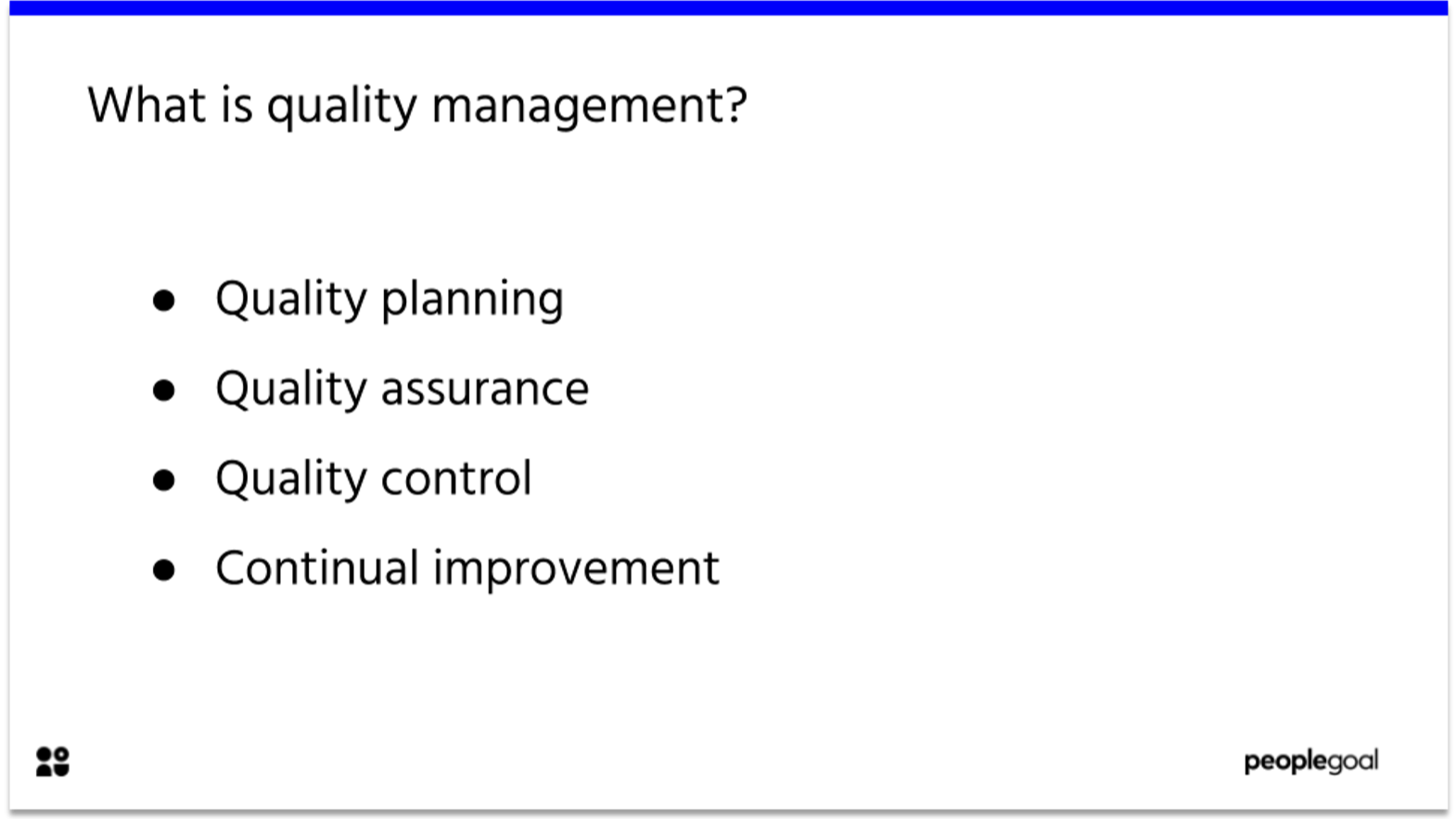As we move through the fourth quarter of 2018, many businesses are looking ahead to 2015, with human resources professionals addressing end of year deadlines and preparing for annual employee performance reviews.
Some companies will continue the practice of standard annual reviews, while others will replace reward/punishment-based annual processes with real-time reviews, and continuous feedback approaches.
With challenges like paper/spreadsheet-based processes, talent retention, performance visibility, and employee engagement top-of-mind for many HR leaders — only 4% of HR managers think their system of assessing employees is effective at measuring performance—a system overhaul is desperately needed.
At PeopleGoal our job is to help companies like yours boost productivity. That’s why we’ve put together a checklist of seven simple ways to help you optimize and modernize your performance management process in 2025.
1. Embrace Company-Wide Goal Setting
As the drivers behind the performance review process, HR leaders should be seeking real ROI from performance management systems, not fighting executives who aren’t accountable for deadlines, or managers who don’t bother to deliver reviews.
By establishing company-wide Objectives and Key Results (OKRs), employees can align their individual goals with larger company objectives, improving the understanding of individual contributions to the overall company’s success. It’s a great way to start everyone off on the same page for the year, and it helps with employee engagement, making employees feel like they are part of the larger organization’s wins and losses.
2. Authenticate Relationships: Nurture Employee Engagement
With 90% of companies who have redesigned performance management seeing direct improvements, feedback cadence is a performance management element ripe for change.
Real-time feedback and 2-way feedback are two techniques that do wonders for promoting employee engagement. Both systems allow managers to “check-in” more often with employees, helping to address obstacles, provide coaching, and giving praise at regular intervals. Issues and concerns aren’t allowed to fester for a full year, and employees feel “seen” and “heard” more often.
3. Give 360° Feedback a Try
In addition to real-time feedback, and 2-way feedback, 360° feedback is quickly making its way into modern performance management systems. Like 2-way feedback, 360° feedback allows both employees and their managers to request and provide feedback, but in addition, employees can also request feedback from a peer or client.
Using a performance management software help simplify the 360° feedback process, making it easier to collect, organize, and analyze feedback from multiple sources. Additionally, some systems allow employees to complete short self-assessments, helping to identify goals, challenges, and workplace dynamics from multiple perspectives. This creates a more well-rounded and insightful review process for everyone.

4. Ditch Your Excel Spreadsheet Tracking Habit
Have you ever been on a project where 10+ people shared a common offline document? It’s a nightmare! No one is really sure what version is the correct version, and people accidentally erase data, or input wrong information all the time.
Going online solves these headaches, while allowing you to streamline your performance management process. An online system also keeps data safe and secure in the cloud, reduces process times, and creates a more efficient communication network between departments. And, very importantly, it also reduces the amount of menial labor notoriously involved in traditional performance management methods.
In addition, online-based EPM software allows you to “brand and promote” performance reviews, taking a “marcom” style approach to engagement, for more process buy-in across your organization.
5. Brand 2025 ‘The Year of Analytics’
We live in a data-driven world, so it’s no surprise that data would show up in our performance management overhaul. By adopting a strategic, data-driven approach, your organization can collect and analyze data effectively, allowing you to recognize high-achievers and more closely monitor your overall performance process.
Data also allows you to see how often check-ins are taking place, making sure that managers are helping to bolster employee morale and performance with frequent feedback. Additionally, it can help you understand which managers are stellar, and which could use coaching and support. Your data reporting methods should also be customizable, giving you the ability to generate various reports based on your specific evaluation needs.
6. Make It All About Support (Especially When It Comes to New Management Software)
A checklist to help you modernize your performance management system wouldn’t be complete without addressing the implementation of new performance management software—one of the main upgrades you can make to your performance management process.
Before you select and buy software, you should carefully consider what features and elements you really need. Modular platforms are often best, you only pay for what you use. Customization is also key; a platform that fits your individual organization and specific management goals.
You should consider exploring product demonstrations, trial accounts, and qualification calls. That way you avoid purchasing any software that isn’t ideal. And most importantly, look for a software vendor that provides post-sale technical support. You’re much better off with a consultative approach provider than buying software that you’re never going to use.
7. Get Buy-In from Key Stakeholders for Any Big Changes
And our last, but not least, important element to consider when reinventing your performance management process is buy-in. Who has the authority to influence your project and its outcome?
Cultivating change successfully in your HR department is highly dependent upon correctly identifying and engaging stakeholders. The more engaged your stakeholders are, the higher the chances of completing your project successfully. Your software, analytics, and goal-setting initiatives are only effective if teams actually use them.
To receive larger buy-in from executives and key company stakeholders, you must show how your changes will deliver real value to the entire organization. What about your software choice, or 2-way feedback approach, will they enhance the larger company’s ability to succeed?
At PeopleGoal, We’re Here to Help!
From paper-based process migration, to raising employee engagement, we know it takes a lot of time, research, analytics, and resources to initiate change. That’s why we’re here to help you adapt —aiding you through every step of your performance management process with our consultative approach.
For more ways to successfully make 2025 the year of change, check out our practical toolkit— Modernizing your Performance Management Processes. It’s free, easy, and simple to use.
You can also email us directly at contact@peoplegoal.com, or give us a call at +44 (0) 7990012125.
Ready to 3x Your Teams' Performance?
Use the best performance management software to align goals, track progress, and boost employee engagement.






